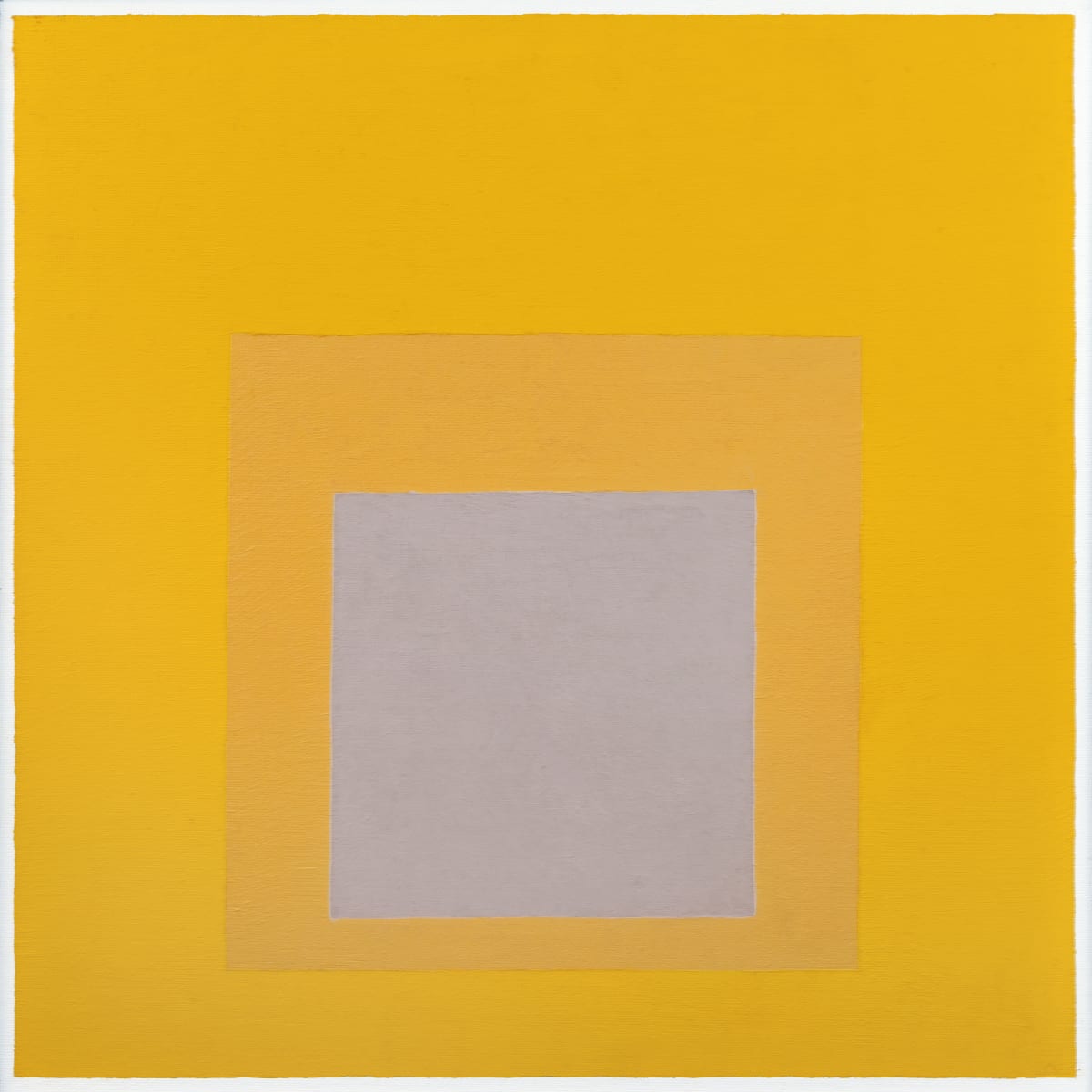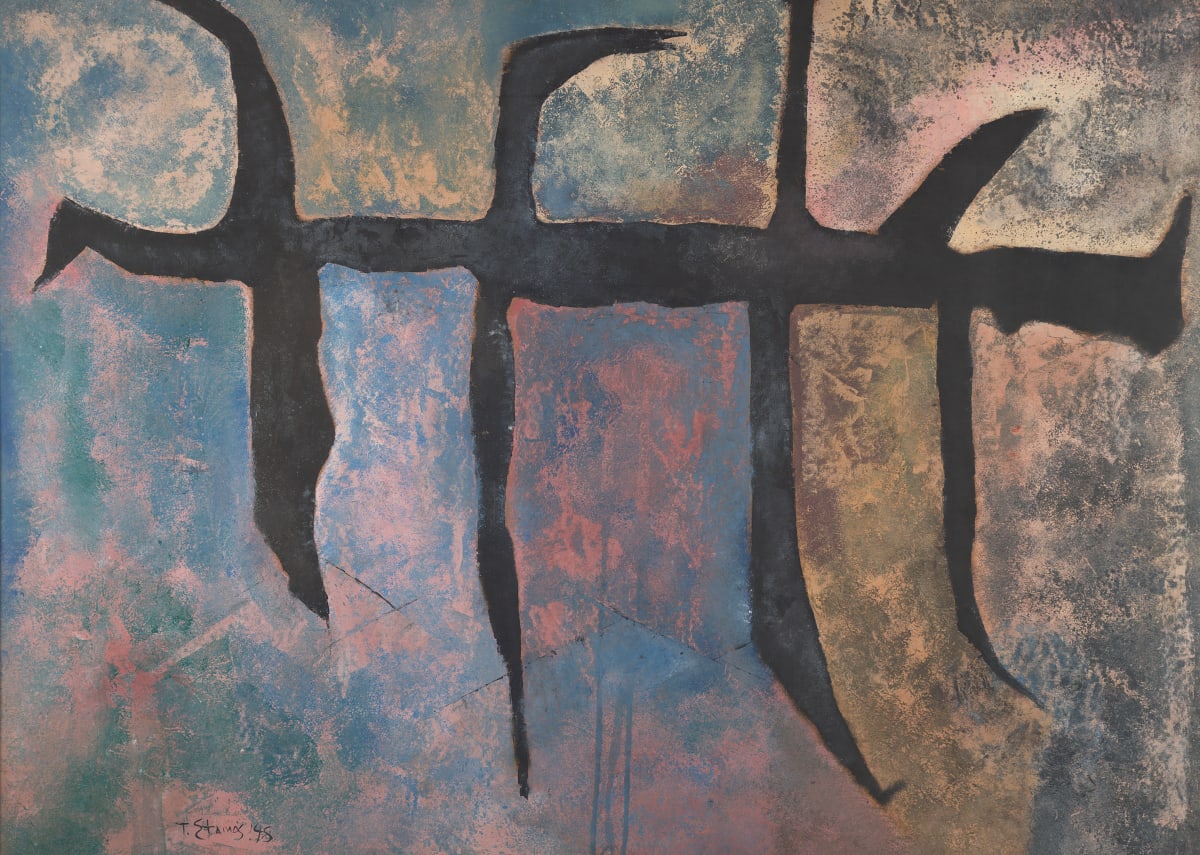
Throughout Albers' career, he "extolled visual nuance and mixed playfulness with formalism."
German-born Josef Albers was a pioneering painter, designer, teacher, and theoretician. As a result of the growing Nazi threat in Europe, Albers was one of the first Bauhaus faculty members to emigrate to America, where he accepted a teaching position at Black Mountain College in North Carolina. Throughout Albers' career, he "extolled visual nuance and mixed playfulness with formalism." (1) Albers' lifelong investigation of geometric forms and expressions of color came to fruition in his 'Homage to the Square' paintings, for which he is best known. Starting this series in 1950 at age 62, he immersed himself in the task of presenting color and form in infinite variations until his death 26 years later. In this period he made over a thousand 'Homage to the Square' paintings and prints.
1. Nicholas Fox Weber, 'The Artist as Alchemist' in Joseph Albers: A Retrospective ( New York: Solomon R. Guggenheim Museum, 1988).











